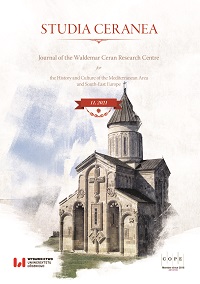The Concept of Whole Substance in Galen’s "Simple Medicines"
The Concept of Whole Substance in Galen’s "Simple Medicines"
Author(s): John WilkinsSubject(s): History, Middle Ages
Published by: Wydawnictwo Uniwersytetu Łódzkiego
Keywords: ancient medicine; Greek medicine; Galen; concept of whole substance; De simplicium medicamentorum temperamentis et facultatibus; On the Mixtures and Capacities of Simple Medicines
Summary/Abstract: Galen’s great treatise on drugs, Simple Medicines, begins with 5 theoretical books which explain the mechanisms of drug actions in the following catalogues. The key agent of change is the mixture of the qualities hot, cold, wet and dry. But drugs also have substance, the leaf, root or fruit of plants, the material of animals and minerals. How does substance act on the human body? This is one of the key questions for the theory of drugs, since mixtures had already been explored by Galen in Mixtures. Galen’s exploration of substance brings him to the composition of a drug – in thick or fine particles – and to the notion of substances in the plural and the notion of whole substance in the cases of foods and poisons, all of which Galen places in the class of drugs. Whole substance is the core of the paper. Galen’s understanding of substance as of qualities depends heavily, as often, on Aristotle. The paper presents an argument based on the key passages in Simples I–V, which I have recently translated for the Cambridge Galen series, as too on related passages in Mixtures and On the Capacities of Foods.
- Issue Year: 2021
- Issue No: 11
- Page Range: 479-491
- Page Count: 13
- Language: English

